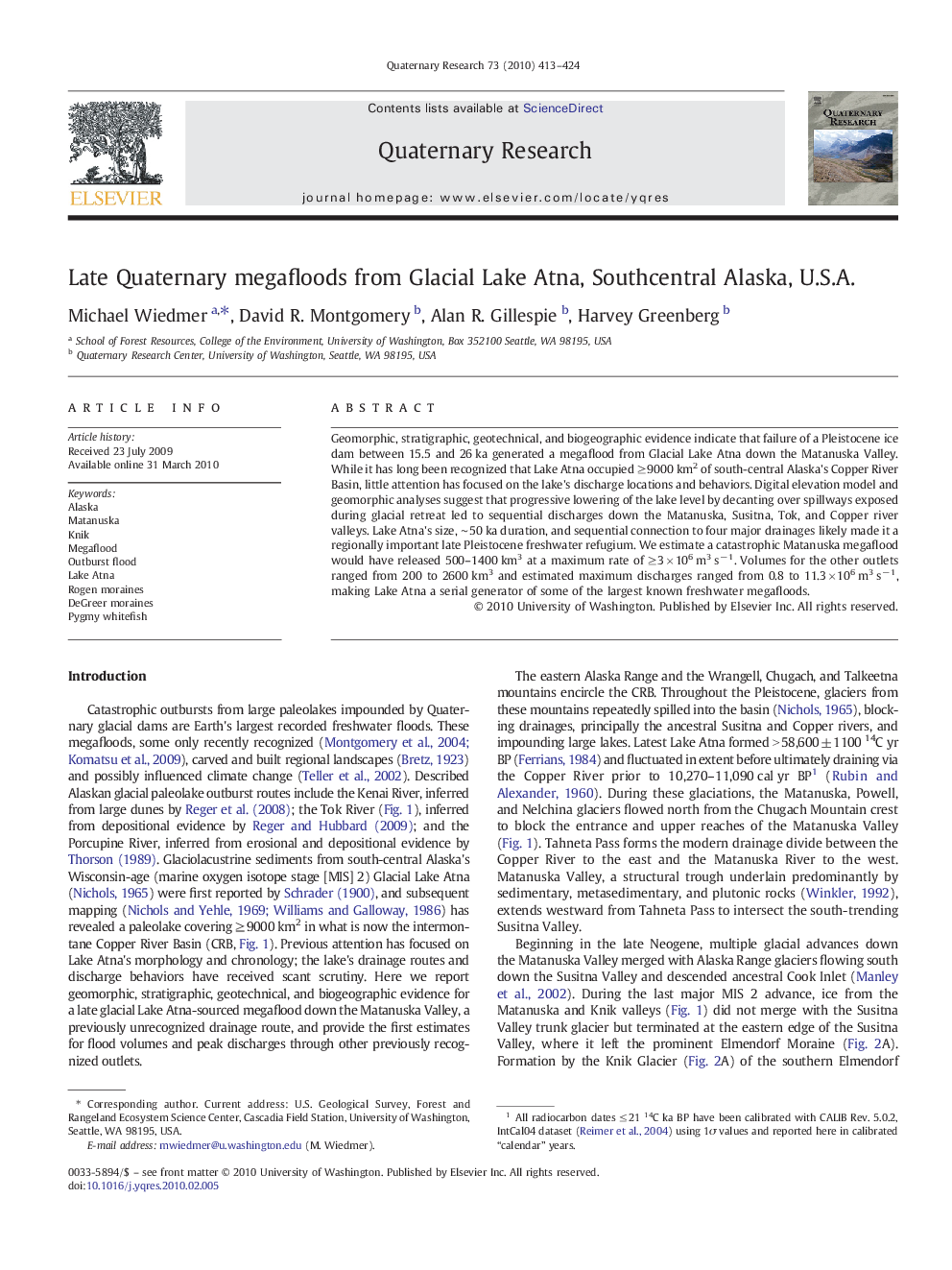| Article ID | Journal | Published Year | Pages | File Type |
|---|---|---|---|---|
| 1045918 | Quaternary Research | 2010 | 12 Pages |
Geomorphic, stratigraphic, geotechnical, and biogeographic evidence indicate that failure of a Pleistocene ice dam between 15.5 and 26 ka generated a megaflood from Glacial Lake Atna down the Matanuska Valley. While it has long been recognized that Lake Atna occupied ≥ 9000 km2 of south-central Alaska's Copper River Basin, little attention has focused on the lake's discharge locations and behaviors. Digital elevation model and geomorphic analyses suggest that progressive lowering of the lake level by decanting over spillways exposed during glacial retreat led to sequential discharges down the Matanuska, Susitna, Tok, and Copper river valleys. Lake Atna's size, ∼ 50 ka duration, and sequential connection to four major drainages likely made it a regionally important late Pleistocene freshwater refugium. We estimate a catastrophic Matanuska megaflood would have released 500–1400 km3 at a maximum rate of ≥ 3 × 106 m3 s− 1. Volumes for the other outlets ranged from 200 to 2600 km3 and estimated maximum discharges ranged from 0.8 to 11.3 × 106 m3 s− 1, making Lake Atna a serial generator of some of the largest known freshwater megafloods.
